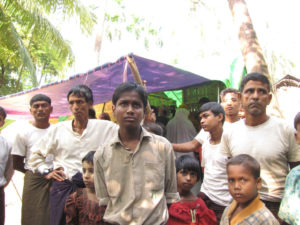Blog
Statelessness and International Development: The importance of incorporating stateless populations into development processes
Written by Khadija Badri
May 24, 2017
UNHCR estimates that there are currently 10 million stateless people worldwide, although many suggest the number is probably higher. Despite this large global population of stateless people, until recently, the issue has received limited attention in international development.
What is statelessness?
Statelessness is when a person does not have citizenship which means they do not have a nationality belonging to any country. This does not just mean that a person with this status lacks a passport. Because they are not citizens of any state, states are not technically obliged to protect them in the same way they are required to protect official citizens. As a result, stateless people often lack access to fundamental rights, such as education, healthcare and freedom of movement. It can restrict them from gaining a driver’s licence, getting married or opening a bank account.
Statelessness can occur for a number of reasons. Gaps or technical issues in nationality laws may increase risk of statelessness, for example, some countries only allow nationality to be passed down through the father. Deliberate measures, such as, deprivation of nationality can be used as a tool to discriminate against certain populations. Also, the emergence of new states can lead to incidences of statelessness – the breaking up of the USSR has led to stateless populations in countries including Latvia and Estonia as a result of the formation of new borders. Whatever the cause of statelessness, it has serious implications for the individuals who experience it.
Development and statelessness
In the 2015 SDGs, target 16.9 to “provide legal identity for all, including birth registration”, by 2030 indicates that eradicating statelessness is incorporated into global development aspirations. However, in practice, there is little space made for stateless populations in development processes. Stateless groups have often been excluded from development projects, contributing to their further marginalisation and violation of their basic rights.
One example of this is the Bihari community in Bangladesh, an Urdu-speaking Muslim minority Pakistani community which remained in Bangladesh after its independence in 1971. Although the Bihari were originally supposed to be repatriated to Pakistan, they have been placed long-term in refugee camps and face discrimination as a minority group. They were not recognised as citizens by the Bangladeshi authorities until a Supreme Court decision in 2008, which allowed all Urdu speakers to be recognised as citizens. Before this ruling, the status of the Bihari as stateless meant that they were excluded from development processes. In 2004, a World Bank approved educational project Reaching out of School Children (ROSC) was undertaken by the Bangladesh government, which aimed to improve child literacy rates for 500,000 deprived children. Bihari children who lived in camps – where there are almost no educational facilities – were not included in this project. This demonstrates how statelessness can be used deliberately by states to exclude minorities from development processes and exacerbate their social and economic marginalisation.
If international development is supposed to reach deprived communities, why has it so far failed to act on the exclusion of stateless people – often the victims of social, economic and political disadvantage and deprivation – from its practices? Stateless populations are being left behind by development and until more action is taken to include them, their needs and rights will continue to be overlooked. In order to overcome statelessness and the barriers to development it creates, organisations not only need to actively include stateless people in development initiatives, but also challenge societal attitudes which may have led to the discrimination and statelessness of minority groups in the first place. This is a challenging task, but essential in order to ensure that stateless people are no longer left behind by the international development agenda.
Hope for the future?

Photo credit: U.S. Mission Photo/Eric Bridiers
Despite this neglect of statelessness within international development, there has recently been an increasing interest in the issue. Civil society organisations, such as the European Network on Statelessness and the Institute on Statelessness and Inclusion are advocating for incorporation of the issue into development. They are engaging with both governments and international organisations, including UNHCR, to ensure the human rights of stateless people are protected and legal frameworks are improved. In 2014, UNHCR launched its 10 year-long #IBELONG campaign to end statelessness, with a global action plan being created as part of the campaign.
“The SDGs must be implemented in a manner that does not leave the stateless behind. In other words, the same way that lack of a nationality should not be a barrier to human rights protection, it should also not be a barrier to accessing development on equal terms.”
– Institute on Statelessness and Inclusion (2017)
The commitment from an organisation as prominent as UNHCR to end statelessness demonstrates that the issue has started to gain significance and could be treated with greater importance and urgency by international organisations and development agencies in the near future. This engagement between civil society organisations and UN agencies signals a hopeful start to international development’s commitment to end statelessness.
Khadija is an LIDC intern and a Master’s student of Migration, Mobility and Development at SOAS. She is interested in migration and protecting the human rights of refugees, asylum seekers and stateless people.

